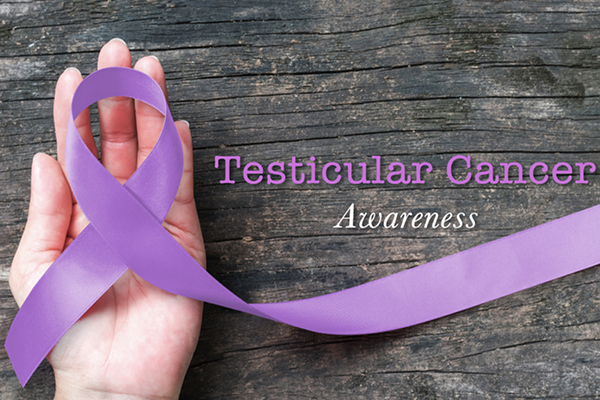Testicular Cancer Awareness Month
Testicular cancer, or cancer that starts in the testes located inside the scrotum, is most commonly diagnosed in men between the ages of 20 and 35. Though considered a rare and highly treatable type of cancer, like other cancers, early diagnosis and regular exams are crucial to ensuring the best outcome.
This Testicular Cancer Awareness Month, let's raise awareness and encourage men to actively lookout for signs of cancer and prioritize their testicular health.
Types of Testicular Cancer
Testicular cancer is diagnosed as one of two types: seminoma and non-seminoma.
-
Seminoma - This testicular cancer type develops from young germ cells and grows slowly, meaning it is unlikely to spread. The two kinds of seminoma tumors are classical and spermatocytic.
-
Non-seminoma - This testicular cancer type develops from mature germ cells and tends to be more aggressive. The four types of non-seminoma tumors include embryonal carcinoma, yolk sac carcinoma, choriocarcinoma, and teratoma.
Testicular Cancer Symptoms
Early detection is crucial for ensuring successful treatment with any type of cancer, making it important for everyone to be aware of the most common symptoms. Some of the signs and symptoms of testicular cancer include:
-
A lump on either testicle
-
Pain or discomfort in the testicles or scrotum
-
A feeling of heaviness in the scrotum
-
A collection of fluid in the scrotum
-
Pain in the back, abdomen, or groin
-
Tenderness or enlargement of the breasts
Testicular cancer typically appears in one testicle, but tumors can develop in both though rare.
Testicular Cancer Risk Factors
Some of the factors that could increase your risk for developing testicular cancer:
-
An undescended testicle - Also known as cryptorchidism, an undescended testicle occurs when one of the testes does not descend into the scrotum before birth. Even if surgically repaired, the risk remains elevated.
-
Abnormal testicle development - Those with conditions, such as Klinefelter syndrome, that cause the testicles to grow abnormally can increase your testicular cancer risk.
-
Family history - Your risk for developing testicular cancer may increase if your family members have been diagnosed.
-
Age - Men aged 20 to 35 are at most risk for a testicular cancer diagnosis.
-
Race - White men are at the highest risk of developing testicular cancer.


